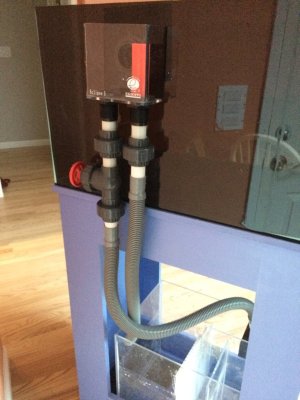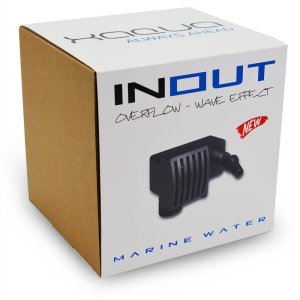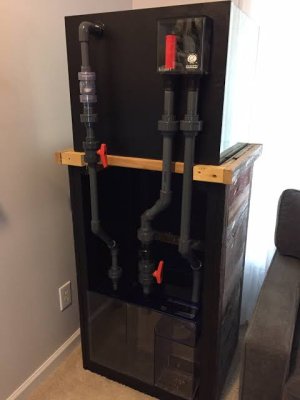Andrés Garza
New member
> Hello everyone, good morning.
I currently have a 55-gallon display tank, and I’m planning to drill it to install a bulkhead. Given the limited size of the system, I’d prefer to avoid drilling two separate holes for both the main drain and return line. Instead, I’m considering using an Eshopps Eclipse overflow box.
I’d appreciate some insight into how these overflow boxes function in practice and whether they’re a good fit for a smaller setup like mine.
My plan is to drill a single 1-inch hole to serve as the main drain and connect it to the Eclipse box externally. In this configuration, what would be the practical differences compared to running all the PVC plumbing externally without an overflow box?
In terms of reliability, noise reduction, and flow stability, would the Eclipse overflow box be a superior solution for this type of setup?
 The image is from the internet and is for reference only.
The image is from the internet and is for reference only.
--
I currently have a 55-gallon display tank, and I’m planning to drill it to install a bulkhead. Given the limited size of the system, I’d prefer to avoid drilling two separate holes for both the main drain and return line. Instead, I’m considering using an Eshopps Eclipse overflow box.
I’d appreciate some insight into how these overflow boxes function in practice and whether they’re a good fit for a smaller setup like mine.
My plan is to drill a single 1-inch hole to serve as the main drain and connect it to the Eclipse box externally. In this configuration, what would be the practical differences compared to running all the PVC plumbing externally without an overflow box?
In terms of reliability, noise reduction, and flow stability, would the Eclipse overflow box be a superior solution for this type of setup?
--



